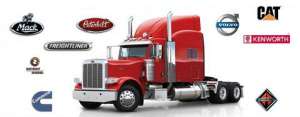Parts Shortages in the Trucking and Transportation Industry in the USA

The trucking and transportation industry in the USA is facing a major problem: a shortage of parts. This shortage has caused significant disruptions in the industry, leading to a decline in both production and profits. The shortage is having a major impact on the entire industry, from trucking companies to manufacturers and suppliers.
The trucking and transportation industry is highly dependent on the availability of parts. Without the necessary parts, trucks, trailers, and other vehicles cannot be maintained and repaired. This in turn causes a decrease in productivity, which has a ripple effect throughout the entire industry. The shortage of parts has been particularly severe in recent years, leading to significant disruptions in the production and delivery of goods and services.
The cause of the shortage is multifaceted. One factor is a lack of new parts being manufactured. Many parts manufacturers have closed their doors due to the recession, and those that remain are struggling to keep up with demand. In addition, many of the new parts suppliers are located overseas, which makes it difficult for the industry to obtain the parts they need in a timely fashion.
Another factor is the high cost of parts. Parts prices have been rising steadily in recent years, making it difficult for trucking companies and other transportation providers to remain profitable. In addition, there are shortages of certain parts that are essential for the proper functioning of the industry. This has led to a situation where parts suppliers are unable to keep up with demand.
The shortage of parts has led to a number of problems for trucking and transportation companies. First, the shortage of certain parts has made it difficult for companies to maintain their fleets. This has led to a decrease in the number of trucks available, which has had a major impact on the industry’s ability to deliver goods and services in a timely manner. In addition, the lack of parts has caused delays in repairs, resulting in a decrease in the number of trucks available for use.
The shortage of parts has also had a negative effect on the industry’s ability to innovate. Without the necessary parts, companies are unable to develop new technologies or upgrade their existing fleets. This has led to a decrease in the industry’s ability to remain competitive.
Finally, the shortage of parts has led to a decrease in profits for many trucking and transportation companies. Without the necessary parts, companies are unable to maintain their fleets and are forced to lay off employees. This has had a major impact on the industry’s ability to generate revenue and remain profitable.
The shortage of parts in the trucking and transportation industry in the USA is a serious problem that is having a major impact on the entire industry. The shortage has led to a decrease in productivity, innovation, and profits, which has had a significant effect on the industry’s ability to remain competitive. In order to address this problem, it is essential that the industry take steps to increase the availability of parts and reduce their cost. This will require both manufacturers and suppliers to work together to ensure that the necessary parts are available when they are needed.
In addition, the industry should look for ways to increase the efficiency of its operations. This may include investing in new technologies that can reduce the need for certain parts, as well as finding ways to streamline the production process. By increasing efficiency, the industry can reduce the amount of parts needed and improve its profitability.
Finally, the industry should work with government agencies to ensure that it has access to the parts it needs. The government can provide incentives to manufacturers and suppliers to encourage them to keep up with demand. In addition, the government can provide grants and other forms of assistance to help the industry remain competitive.
The shortage of parts in the trucking and transportation industry in the USA is a major problem that is having a significant impact on the entire industry. In order to address this problem, it is essential that the industry take steps to increase the availability of parts and reduce their cost. This will require both manufacturers and suppliers to work together to ensure that the necessary parts are available when they are needed. In addition, the industry should look for ways to increase the efficiency of its operations and work with government agencies to ensure that it has access to the parts it needs. By taking these steps, the industry can reduce the impact of the shortage and ensure that it remains competitive in the future.
